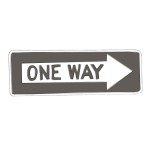8 hot tips for your resume that can get you an interview
Let me make one thing very, very clear: There is only one purpose of a resume:
To get you an interview with a prospective employer
No, no and no – it’s purpose is not to get you the job, that’s what the interview is for! The resume is meant to be your extended business card, your personal sales and marketing pitch, which will get the recruiter to grab the phone and call you in for a meeting.
- Use a standard Microsoft Word document and please do not use Excel or PowerPoint. On the top or at the very bottom, use the header or footer function in Word, write your name and address, and remember to include your mobile telephone number and email address. Use a business like email address, which means that happygolucky@gmail.com does not give the right impression. There is no need to write the words Resume or CV, as that should already be easily recognisable. Last but not least, save your Microsoft Word document using your name; do not call it “my_resume.doc”.
- Fonts that are too fancy can be difficult to read so go for something like Arial, Century Gothic, Garamond, Tahoma or Times Roman. Do not be tempted to use underline and italics but use bold-faced type for your section headings. The top and bottom margins should be between 1.5 to 2.0 centimeters. The left and right margins should measure two to three centimetres. Insert enough white space between the different paragraphs so it appears easy to read.
- Considering that the HR department or the recruitment consultant will only use 10 to 20 seconds to read each resume, you will understand the importance of quickly pointing to your strengths related to the job you want to be considered for. You need to catch the immediate interest of the reader within that very short moment.
- Do not keep the best for last, as the recruiter reading your resume might not even get to the end of it before filing you in the “no” pile. It is essential that you state your case up front, state your achievements and the value you can bring to the company.
- After the personal data, the next section should show your professional work experience. Always list your jobs in reverse chronological order, with the current or most recent job as the first. For each job, state the company name, the industry of the company, your position or title, and the month and year (or just the year) of the employment period. Unless you have been working for Coca-Cola, BMW or Thai Airways International, it is always a good idea to include a short one-line-sentence on the type of business your employer was in, as it will help the recruitment company or executive search firm quickly determine which industry you belong to.
- You need to present your skills and experience in the best possible way and then stress why you fit the job. You need to impress the reader, whether an HR department or a recruitment company, so do not keep the best for last. It is worthwhile to spend some time on preparing an effective and error-free document that will immediately impress an employer. Use the KISS technique – keep it short and simple. Do not use more than two pages if you have 10, 15 or 20 years of work experience. If you have over 20 years’ experience, you may consider using three pages.

- Achievements and responsibilities are not the same. What the employer wants to see is what you did with the responsibilities you were given, in other words what results, achievements and accomplishments are you proud of? For instance, describe what you did to increase the sales and the percentage they increased, or ways in which and by how much you were able to reduce the costs of sales. Strong keywords include achieved, delivered, generated, increased, initiated, cut, decreased, and reduced.
- Your personal data should include your nationality, your age or date of birth, your marital status and your gender. If you are absolutely sure that a picture of you will appeal to both male and female readers, that no one will take offence to your hairstyle, glasses, ears, clothing or what have you, then by all means go ahead and attach a photo. If you are in doubt about who will be reading your resume, and what that person may or may not like, you should not include a photo. Do not take the risk of ending up in “no” pile, simply because the recruiter has a preference for another type of “look”.

